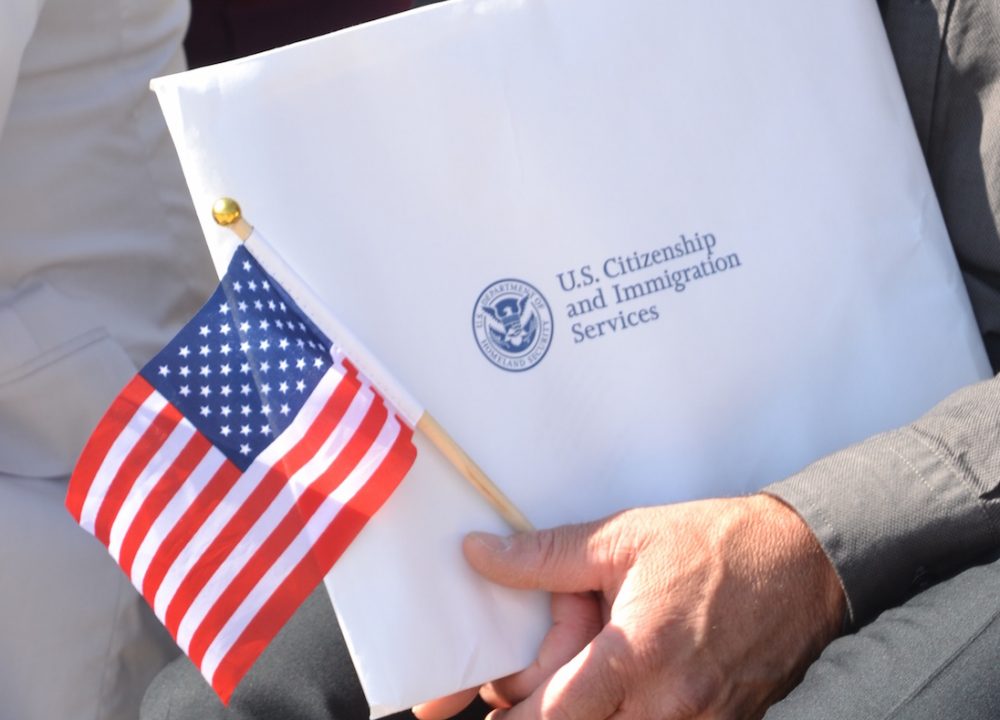The Immigrant Investor Program Office (IPO) is the office within USCIS responsible for administering the EB-5 investor program. The EB-5 program created in 1990 to encourage foreign investment to benefit the U.S. economy and create jobs in the United States.
Every year 10,000 visas set aside for investors and their family members, who invest and create atleast 10 jobs for US workers.
IPO office has approximately 212 dedicated personnel. This number includes support staff, adjudicators, economists, Fraud Detection and National Security personnel, and other positions vital to the IPO mission. The number of adjudicative resources and personnel assigned to each EB-5 case type frequently varies based upon workload demands and priorities.
Over the past few years, IPO has been working diligently to reduce processing times by onboarding additional personnel, resulting in adjudicating more than 14,900 Immigrant Petitions by Alien Entrepreneur (Form I-526) in fiscal year 2018, which was an approximate 69% increase over the average completions for the previous five fiscal years.
During the recent stakeholder meeting in Sep 2019, the IPO office, highlighted important updates relating to EB-5 program
- During fiscal year 2019, the sunset of the Regional Center program during the last part of December (Government shutdown) and through most of January, cost IPO adjudicative time even after the program was reauthorized.
- IPO was forced to pivot to stand alone petitions and I-829 work and halted production on I-924s and I-526s associated with a Regional Center.
- IPO has taken significant steps in building more robust quality assurance and control programs to better ensure consistent adjudication practices, including conducting an extensive training session for all I-526 adjudicators and economists.
These reasons, along with temporary assignment of some staff to other agency priorities, have resulted in longer processing times, which you may have noticed with the May update to our online processing times.
EB-5 New Changes 2019
Effective Nov 21, 2019, important changes will be applied to EB-5 immigrant investor program. These include
- Investment amounts raised to $900,000 and $1.8 million
Targeted employment area (“TEA”) designation standards and process; - Removal of conditions process; and
- Priority Dates
The Trump administration has introduced collecting social media information for all visa applicants.
Investment amounts
Since 1990, the standard minimum investment amounts have remained the same. Yet, Congress granted specific authority to increase investment levels. That has never been done. This rule provides for the first adjustment to those amounts in 29 years. Every five years, these amounts will be adjusted to account for inflation. The adjustments will be based on the initial $1 million set by Congress in 1990 rather than the most recent minimum investment amount. For example, in 2024, the amount will be adjusted for inflation to equal what $1 million was in 1990.
The new eligibility requirements include the new minimum investment thresholds. This means that even if the previously- approved I-526 was based on a $500,000 investment in a high- unemployment area TEA designated by a state under the current regulatory requirements, the new I-526 filed on or after November 21, must be based on a $900,000 investment in a TEA that complies with the new requirements or a $1,800,000 investment if the area does not comply with the new TEA requirements. This does not mean, however, that a petitioner necessarily has to invest $900,000 on top of the $500,000 already invested. In some cases, a petitioner may invest an additional $400,000 on top of the existing $500,000 and be eligible under the new requirements.
Designation of certain high-unemployment TEAs for petitions filed on or after the effective date of the rule
- Prior to the rule, states have been able to designate certain geographic and political subdivisions as high unemployment areas in order to qualify as TEAs.
- The rule eliminates this ability for states to be involved in the designation of certain high unemployment area TEAs, shifting all TEA designation determinations solely to DHS. In order to remain fair and consistent, the determinations will be based on new requirements in the regulation addressing how census tracts can be combined to create a TEA.
The purpose of this revision is to better ensure that the reduced investment threshold is reserved for areas experiencing sufficiently high levels of unemployment, as Congress intended. - The final rule does not make any changes to current policy on the timing of TEA determinations as it relates to the appropriate date to examine to determine whether the investor qualifies for the lower capital investment amount.
Removal conditions
- The new rule also clarifies some aspects of the process of removal of conditions. For example, the rule clarifies that, except in the case of a deceased principal, derivatives not included in the principal’s Form I- 829 petition cannot use one petition for all the derivatives combined but must each separately file his or her own Form I-829 petition.
- The new rule also clarifies that USCIS has authority to schedule an interview at the USCIS office holding jurisdiction over either the immigrant investor’s commercial enterprise, the immigrant investor’s residence, or the location in which the Form I-829 petition is being adjudicated. This provides for a more efficient adjudication process by allowing for additional flexibility in interview locations.
- The new rule eliminates the requirement for an immigrant investor and his or her derivatives to report to a district office for processing of their permanent resident cards, which aligns the regulations with the current process for issuing permanent resident cards.
Priority date retention
- Under the new rule, in certain circumstances, USCIS will allow certain petitioners to retain the priority date of a previously approved I-526 petition, including I-526s approved prior to the effective date of the rule, and apply the earlier priority date of the previously approved I-526 petition to a subsequent I-526 filed by the same petitioner on or after November 21, 2019. This provision includes previously approved I-526s that were revoked on certain grounds.
- Also under this new rule, the priority date of an approved I-526 shall not be conferred to a subsequently filed I-526 petition if: 1) the petitioner was already admitted using the earlier-approved petition; or 2) the previously-approved I-526 was revoked based on fraud or a willful misrepresentation of a material fact by the petitioner, or a determination by USCIS that the petition approval was based on a material error.
- As an example, let’s say a regional center investor has an approved I- 526 but has been waiting for a visa to become available. Before their visa becomes available and they obtain conditional permanent resident status, the regional center affiliated with the approved I-526 was terminated resulting in the revocation of their approved I-526 based solely on the termination of the regional center. The investor may choose to file a new I-526, and retain the priority date of the now- revoked I-526.
- Please keep in mind that even if a petitioner seeks to retain the priority date of an earlier-approved I-526, the petitioner who files a new petition on or after November 21st must meet the new eligibility requirements effective on that date.





